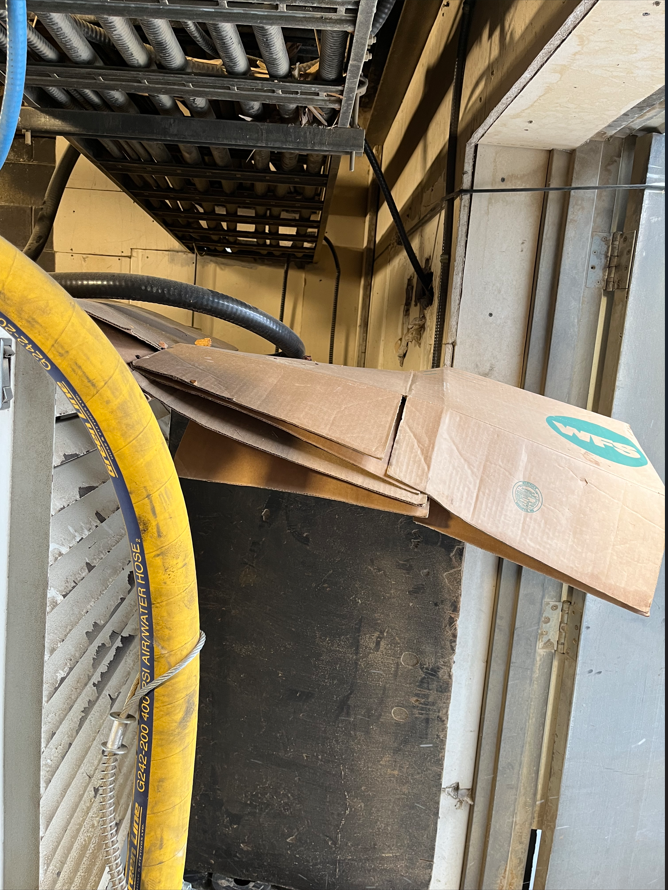
From time to time, compressed air auditors find air-cooled air compressors located in small rooms where the ventilation is inadequate. Most of the time, in properly designed rooms, the heat the compressors produce is ducted out of the room through metals ducting — often, it will be directed to cool areas of the plant in winter to displace building heat. But sometimes, either through ignorance or tight budgets, the compressors will simply be plopped down in a room and asked to fend for themselves in trying to draw in adequate cooling air.
This was the scenario at one wood products plant recently visited by a compressed air auditor. The compressor replaced a failed unit that had remote coolers that expelled the heat of compression outdoors, well away from the original compressor. The replacement unit had internal coolers that couldn’t be relocated, so the complete compressor was installed in a room that had no ventilation exhaust. Due to the low ceiling height, the heat expelled by the compressor easily circled back into the cooling air intake, causing a cooling air “short circuit.” In an attempt to solve the problem, the plant personnel located a sheet of old plywood and a cardboard box and added them in the ventilation path, beside a wide-open door (in -20° Celsius weather) to attempt to resolve the problem, with unfortunate results.
The staff found no matter how they located the cardboard, the compressor would still overheat and shut down at random times. The overheated compressed air produced by the compressor overloaded the air dryer causing moisture in the compressed air lines. Some of this moisture made it to pipes that were exposed to freezing conditions, forming ice blockages, and causing low pressure in remote production locations.
After experiencing these conditions and receiving a long explanation from a compressed air auditor, a ducting company was retained to install proper ventilation ducting on the compressor. The cost of this work was quickly paid back by the reduction in production shutdowns, with more savings gained due to the recovery of the heat to temper cold locations in the plant.
Filed Under: Components Oil Coolers, Compressed Air Technologies, Pneumatic Tips, Technologies